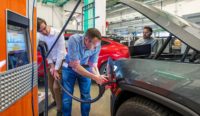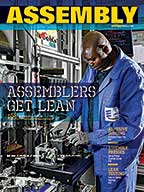Public Charging Issues May Stunt EV Growth

TROY, MI—While automakers continue to introduce new EVs vehicles and experience growth in market share, public vehicle charging infrastructure has not kept pace. If anything, it is falling further behind, claims a recent study conducted by J.D. Power. However, Volta and Tesla Supercharger rank highest in overall customer satisfaction.
According to the 2023 U.S. Electric Vehicle Experience Public Charging Study, despite the increase in public charging stations across the United States, customer satisfaction with public Level 2 charging has declined to 617 (on a 1,000-point scale), 16 points lower than a year ago and the lowest level since the study began in 2021.
Satisfaction is measured across 10 factors, including ease of charging; speed of charging; physical condition of charging station; availability of chargers; convenience of this location; things to do while charging; how safe you feel at this location; ease of finding this location; cost of charging; and ease of payment.
"The declining customer satisfaction scores for public charging should be concerning to automakers and, more broadly, to public charging stakeholders," says Brent Gruber, executive director of the EV practice at J.D. Power. "The availability of public charging stations is still a critical obstacle, but it isn't the only one. EV owners continue to have issues with many aspects of public charging, as the cost and speed of charging and the availability of things to do while waiting for their vehicle to charge are the least satisfying aspects.
“At the same time, the reliability of public chargers continues to be a problem,” notes Gruber. “The situation is stuck at a level where one of every five visits ends without charging, the majority of which are due to station outages.
“Though purported to be the wave of the future, satisfaction with DC fast chargers has declined even further, dropping 20 points to 654,” explains Gruber. “More troubling is that satisfaction in both charging station segments has declined in nearly every attribute measured in the study. Since consumer skepticism regarding public charging availability is the primary reason vehicle shoppers reject EVs, this performance could prove to be a further hindrance to EV acceptance.”
Tesla owners are relatively satisfied with the Tesla Supercharger network (745), but when they go outside the network to use other public charging options, satisfaction declines by nearly 200 points (550).
“With greater adoption of the North American Charging Standard (NACS) pioneered by Tesla, it may provide a boost in fast-charging satisfaction among owners of EVs from other brands as they begin to use Tesla’s Supercharger stations,” says Gruber. “We’re monitoring whether the use of Tesla Superchargers by non-Tesla owners will affect satisfaction, but the move does help address charger scarcity and offer access to industry-leading reliable chargers.”
According to Gruber, public chargers must be placed in appropriate locations. “The reasons EV owners cite for choosing a Level 2 or a DC fast charger and the time they spend at the charger clearly indicate that public chargers should be located where they will most effectively serve their customers,” he points out…The data suggests that DC chargers should be located along travel routes, while Level 2 chargers should be easily accessible near places where EV owners may already be visiting, such as retail venues and entertainment venues.
"The results of this year's study should be very concerning to all those involved in the transition from gas-powered vehicles to electric vehicles," adds Gruber. “Although the majority of EV charging occurs at home, public charging needs to provide a much better experience across the board—not just for the users of today, but also to alleviate the concerns of skeptical future customers. A lot of work is underway to address these issues, but there is certainly much more work to be done.”
Looking for a reprint of this article?
From high-res PDFs to custom plaques, order your copy today!







